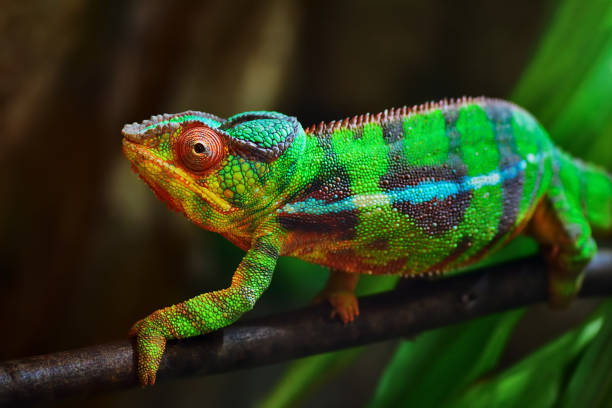Unraveling the Intricacies of Chameleon Adaptations: A Journey Beyond Color Change
Chameleons, the enigmatic and vibrantly colored creatures, are celebrated for their unique ability to change color. However, their fascinating world extends far beyond their famed chromatic skills. This article brings to light the multiple adaptations and survival strategies of these intriguing reptiles, offering insights into their extraordinary lives.

Chameleons: Masters of Adaptation
Chameleons are renowned for their ability to survive in diverse habitats, from the arid deserts of Africa to the tropical rainforests of Madagascar. This survival prowess can be attributed to their numerous physiological and behavioral adaptations. Firstly, their unique feet, each with five toes grouped into two opposable sections, are adapted for a powerful grip that is ideal for life in trees. This zygodactylous arrangement, similar to that of birds, enables them to navigate the arboreal landscape with ease.
Unveiling the Mechanism of Color Change
The chameleon’s color change is not merely an act of whimsy. It’s a sophisticated physiological process involving special cells called chromatophores in the chameleon’s skin. These cells contain pigments and reflect light, allowing chameleons to change color based on their mood, temperature, and environmental factors. This feature is used for communication, mating rituals, and as a defense mechanism.
Vision: Independent Yet Synchronized
Another fascinating feature of chameleons is their vision. Their eyes can move independently, allowing them to look in two different directions at once. This panoramic vision is crucial for hunting and detecting predators. Despite their independent movement, the eyes can also synchronize to provide a sharp stereoscopic view when needed, such as when focusing on prey.
The Intricate Art of Hunting
Chameleons employ a unique hunting strategy. They are sit-and-wait predators, staying motionless and blending into their surroundings until prey comes within reach. Then, with a burst of speed, they project their long, sticky tongues, which can reach up to twice their body length, to catch their unsuspecting prey.
Aiding in Ecosystem Balance
Chameleons play an essential role in maintaining the ecosystem balance. They control insect populations, including pests that can harm plants and crops. On the other end of the food chain, they serve as a vital food source for larger predators, contributing to the biodiversity of their habitats.
In recent years, the chameleon trade for pets and medicine has escalated, posing a threat to their population. Conservation initiatives are underway, focusing on habitat protection and regulating trade.
Chameleons, with their unique adaptations and ecological importance, are indeed a testament to nature’s ingenuity. Their survival strategies not only fascinate us but also remind us of the intricate balance in the animal kingdom and our responsibility to protect it.






